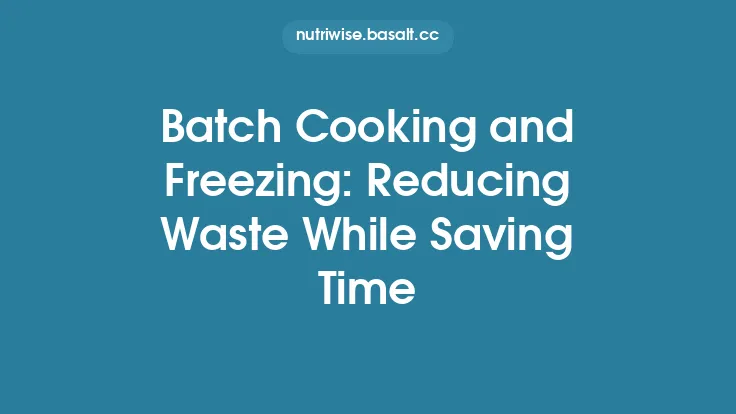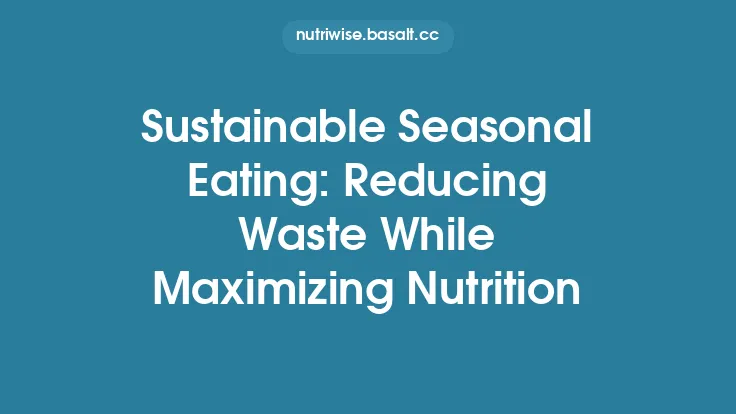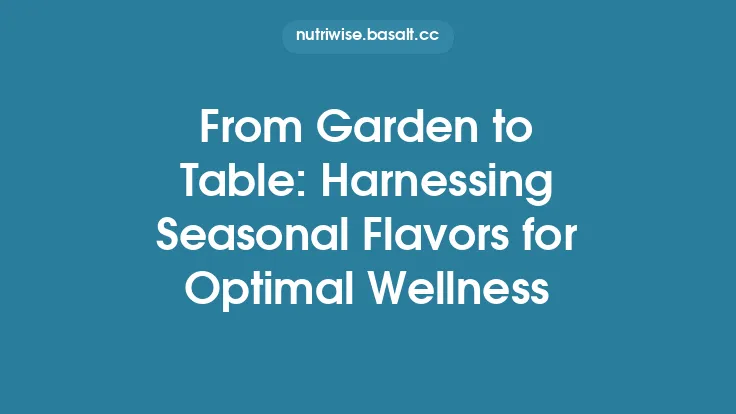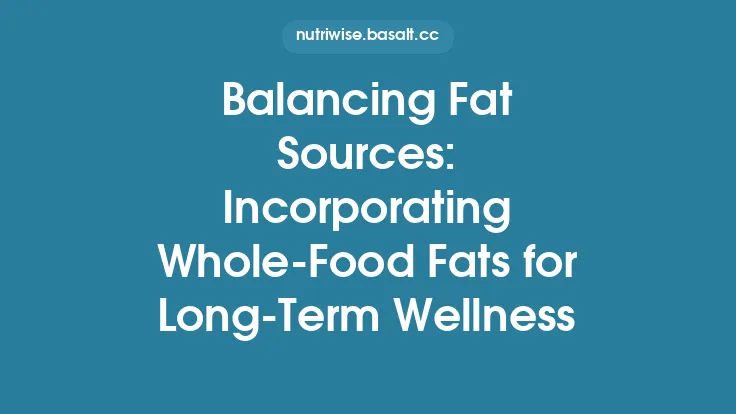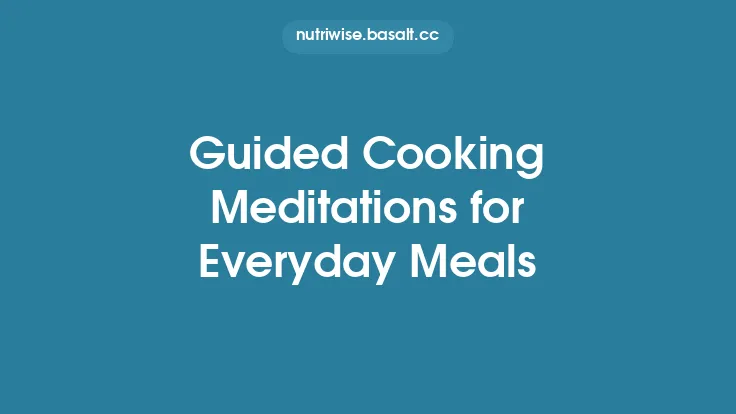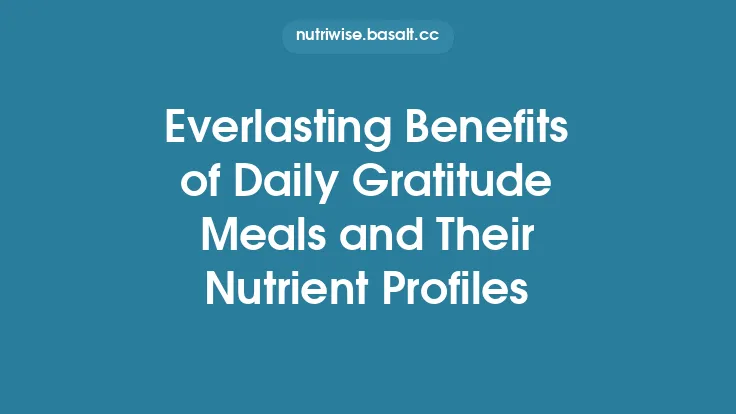Cooking is one of the most intimate daily rituals we perform, yet it is often reduced to a series of tasks that must be completed before the next obligation takes over. When we deliberately weave gratitude into each step of the culinary process, the kitchen transforms from a mere workstation into a sanctuary of sustainable wellness. This article explores how to cultivate a lasting gratitude practice while cooking, why it matters for both personal health and the planet, and concrete strategies for making gratitude an evergreen habit that supports a balanced, resilient lifestyle.
The Science of Gratitude and Its Relevance to Cooking
Gratitude is more than a polite “thank you.” Neuroscientific research shows that regularly experiencing gratitude activates brain regions associated with reward (the ventral striatum) and social bonding (the medial prefrontal cortex). These activations increase dopamine and serotonin levels, which in turn lower cortisol, the hormone most closely linked to stress. When we bring this neurochemical shift into the kitchen, the physiological benefits extend to:
| Effect | How It Manifests in the Kitchen |
|---|---|
| Reduced stress response | Lower heart rate and steadier breathing while chopping or simmering |
| Enhanced focus | Improved attention to timing, temperature, and technique |
| Greater emotional resilience | Ability to stay calm when a recipe goes awry |
| Strengthened social connection | More openness to sharing meals and stories with others |
Because cooking already demands a degree of mindfulness—monitoring heat, timing, and texture—gratitude amplifies these benefits, turning routine actions into moments of intentional well‑being.
Foundations of a Sustainable Gratitude Habit
1. Aligning Values with Ingredients
A gratitude practice that endures must be rooted in personal values. For many, sustainability is a core principle. By consciously selecting ingredients that reflect ecological stewardship—local, seasonal produce; responsibly sourced proteins; minimal packaging—you reinforce gratitude for the broader system that makes the food available.
*Practical tip:* Keep a small notebook or a digital note titled “Ingredient Appreciation.” When you buy a carrot, write a brief entry: “Thank you, carrot, for growing in the cool spring soil of the nearby farm, for providing beta‑carotene that supports my vision.” Over time, this habit builds a mental map linking each food item to its ecological story.
2. Ritualizing the Pre‑Cook Moment
Before the first pot hits the stove, pause for a brief gratitude ritual. This can be as simple as a three‑breath pause while you place your hands on the countertop, feeling the texture of the wood or stone. Silently acknowledge the journey of the ingredients: the farmer’s labor, the transport, the storage, and finally, the opportunity to transform them into nourishment.
*Why it works:* The pause creates a physiological “reset” that lowers sympathetic nervous system activity, preparing the body for focused, calm work.
3. Embedding Gratitude in the Cooking Process
Each cooking action—washing, chopping, sautéing—offers a micro‑opportunity for gratitude:
- Washing: Thank the water for its cleansing power and for the natural cycles that replenish it.
- Chopping: Appreciate the sharpness of the knife, a tool refined over centuries, and the tactile feedback that connects you to the food’s texture.
- Sautéing: Recognize the transformation of raw ingredients into aromatic compounds, a chemical dance that releases flavor and pleasure.
By naming the gratitude in each step, you create a mental anchor that prevents the mind from drifting into autopilot.
Integrating Gratitude with Sustainable Kitchen Practices
Reducing Food Waste Through Appreciation
When we view each ingredient as a gift, we become less inclined to discard parts that seem “imperfect.” For example, carrot tops can be sautéed with garlic for a nutritious garnish, and vegetable peels can be simmered into broth. This mindset not only reduces landfill contributions but also maximizes the nutritional yield of each purchase.
*Actionable method:* After each cooking session, conduct a “gratitude waste audit.” List any discarded parts and brainstorm at least one alternative use. Over weeks, you’ll notice a measurable decline in waste volume.
Composting as an Extension of Gratitude
Composting transforms organic scraps into fertile soil, completing the life cycle of the food you’ve prepared. By actively participating in composting, you express gratitude for the regenerative power of nature.
- Technical note: A well‑balanced compost pile maintains a carbon‑to‑nitrogen (C:N) ratio of roughly 30:1. Use dry, carbon‑rich materials (e.g., shredded newspaper) alongside nitrogen‑rich kitchen scraps (e.g., vegetable peels) to accelerate decomposition.
- Gratitude cue: When adding scraps to the bin, say a short phrase such as, “May these remnants return to the earth and nourish future growth.”
Seasonal Cooking as a Gratitude Calendar
Seasonality aligns your meals with the natural rhythms of the planet. By planning menus around what is in peak harvest, you reduce the carbon footprint associated with long‑distance transport and storage.
*Implementation:* Create a seasonal produce chart for your region. Each month, select a “gratitude ingredient” that is abundant and incorporate it into at least one main dish. This practice reinforces a sense of connection to the local ecosystem.
Building the Habit Loop: Cue, Routine, Reward
Behavioral science tells us that lasting habits consist of three components:
- Cue – A trigger that initiates the behavior.
- Routine – The action itself.
- Reward – The positive reinforcement that solidifies the habit.
For a gratitude‑focused cooking habit, design each component deliberately:
| Component | Example in the Kitchen |
|---|---|
| Cue | A visual reminder on the fridge: “Pause & Appreciate” |
| Routine | The three‑breath pause followed by a gratitude statement before each cooking session |
| Reward | A moment of savoring the aroma, noting the uplifted mood, or logging a gratitude entry in your journal |
By consistently pairing the cue with the routine and a tangible reward (e.g., a brief journal entry that captures the positive feeling), the brain learns to associate cooking with a pleasant emotional state, making the practice self‑sustaining.
Overcoming Common Barriers
| Barrier | Why It Happens | Gratitude‑Based Solution |
|---|---|---|
| Time pressure | Rushed schedules leave little mental space for reflection. | Use a kitchen timer that also displays a gratitude prompt (e.g., “What are you grateful for in this moment?”). The timer serves both functional and reflective purposes. |
| Perceived “silliness” | Some view gratitude as overly sentimental. | Reframe gratitude as a measurable health tool: track mood changes, stress levels, or sleep quality before and after implementing the practice. Objective data validates the approach. |
| Lack of knowledge about ingredients | Not knowing where food comes from can hinder appreciation. | Subscribe to a local farm’s newsletter or use QR codes on produce packaging that link to origin stories. This information fuels authentic gratitude. |
| Inconsistent routine | Habit formation takes time; occasional lapses are normal. | Adopt a “micro‑gratitude” habit: even a single sentence of thanks before the first ingredient is enough to keep the loop active on busy days. |
Measuring the Impact of Gratitude‑Infused Cooking
While the benefits of gratitude are well‑documented, quantifying them in the culinary context can reinforce commitment. Consider tracking the following metrics over a 30‑day period:
- Stress Index – Use a simple 1‑10 self‑rating before and after cooking.
- Food Waste Volume – Weigh discarded food scraps weekly.
- Mood Journal – Record brief notes on emotional state post‑meal.
- Energy Levels – Note any changes in afternoon alertness, which can correlate with reduced cortisol.
Plotting these data points will often reveal a downward trend in stress and waste, alongside an upward trend in positive mood, providing concrete evidence of the habit’s efficacy.
Extending Gratitude Beyond the Kitchen
Gratitude cultivated while cooking can ripple outward:
- Sharing Meals: When you invite friends or family, begin the gathering with a collective gratitude statement about the food and the company.
- Community Engagement: Volunteer at a local food bank or community garden, expressing gratitude for the opportunity to give back.
- Educational Outreach: Teach children simple gratitude prompts (“What part of this vegetable are you thankful for?”) during cooking activities, fostering early mindfulness.
These extensions reinforce the habit loop, as the social reinforcement acts as an additional reward, deepening the habit’s roots.
A Sample Gratitude‑Infused Cooking Session
Below is a concise walkthrough that illustrates how each element can be woven together without turning the process into a step‑by‑step guide (which would overlap with neighboring articles). The focus remains on the gratitude mindset.
- Cue: Spot the “Pause & Appreciate” note on the countertop.
- Pre‑Cook Pause: Place hands on the wood, inhale the scent of fresh basil, exhale slowly three times, and silently thank the basil for its aromatic oils.
- Ingredient Appreciation: As you rinse the heirloom tomatoes, whisper, “Thank you, tomato, for soaking up sunshine and delivering lycopene.”
- Cooking Action: While the olive oil heats, acknowledge the centuries‑old cultivation of olives and the labor of the harvesters.
- Transformation Gratitude: As the tomatoes soften, note the release of umami and thank the heat for unlocking flavor.
- Plate Presentation: Before serving, pause again, looking at the colorful plate, and say, “I am grateful for this nourishment that supports my body and mind.”
- Post‑Meal Reflection: After eating, jot a brief entry: “Today I felt calm while cooking; the aroma of basil lifted my mood.”
Even this brief example demonstrates how gratitude can be seamlessly integrated without adding extra steps or complexity to the cooking process.
Frequently Asked Questions
Q: Do I need a religious or spiritual framework to practice gratitude while cooking?
A: No. Gratitude is a universal human emotion that can be expressed secularly. The practice focuses on acknowledging value and interdependence, which benefits mental health regardless of belief system.
Q: How long should the gratitude pause be?
A: Even a single breath can reset the nervous system. Aim for 3–5 slow breaths; adjust based on time constraints and personal preference.
Q: Can gratitude be practiced with processed or packaged foods?
A: Yes. While whole foods offer richer stories, you can still thank the people involved in production, the technology that preserves the food, and the convenience it provides.
Q: Will this habit affect the taste of my dishes?
A: Indirectly, yes. A calmer, more present mind improves sensory perception, allowing you to notice subtle flavor nuances and adjust seasoning more accurately.
Q: How do I keep the practice from feeling forced?
A: Start small. Choose one ingredient per meal to thank, and let the habit grow organically. Authenticity emerges as gratitude becomes a natural response rather than a checklist item.
Closing Thoughts
Practicing gratitude while cooking is a sustainable wellness habit that bridges personal health, emotional resilience, and environmental stewardship. By aligning the act of preparing food with a mindset of appreciation, we transform a routine chore into a regenerative ritual—one that honors the soil, the farmer, the season, and our own bodies. The habit is evergreen: it does not rely on fleeting trends but on timeless human capacities for thankfulness and connection. As you integrate these practices, you’ll likely notice a calmer kitchen, reduced waste, and a deeper sense of fulfillment at the dinner table—proof that a simple shift in perspective can nourish both self and planet.
